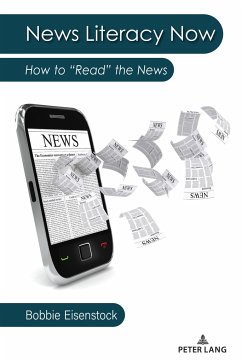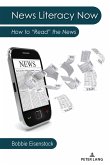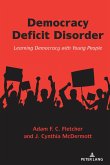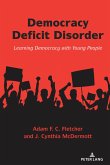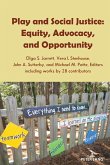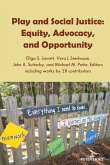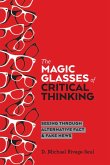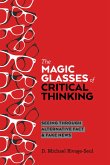Real news. Fake news. Alternative Facts. We are living in the Digital Age of Disinformation where factual news, opinion and disinformation exist side-by-side in the media culture. How do we know who and what to believe?
News Literacy Now introduces a new way to "read" the news. Based on the intersection of media literacy, news literacy, information and web literacy skills, this hybrid strategy adapts the media literacy framework developed by the Center for Media Literacy to analyze the nature of news, explain professional journalism practices and standards, and apply lateral reading to verify facts and empower informed participation in democracy.
Written in a Q and A format from the news consumers' perspective, the book asks and answers questions to think critically about our personal news experiences, the news-gathering process, and the vital roles journalism and the First Amendment play in a democracy. It connects key concepts with strategies to deconstruct misinformation and disinformation that have weaponized falsehoods and disrupted the flow of trustworthy news.
Challenged by a news credibility crisis, news media literacy has never mattered more. What we need are skills to think like a journalist and search like a fact-checker. Whether you are a media literacy expert or newbie to media and news literacy, this book is essential for everyone who uses media-teachers and students from middle and high school to higher ed, parents and grandparents, media and youth advocates, and anyone who cares about living in a world where facts matter.
News Literacy Now introduces a new way to "read" the news. Based on the intersection of media literacy, news literacy, information and web literacy skills, this hybrid strategy adapts the media literacy framework developed by the Center for Media Literacy to analyze the nature of news, explain professional journalism practices and standards, and apply lateral reading to verify facts and empower informed participation in democracy.
Written in a Q and A format from the news consumers' perspective, the book asks and answers questions to think critically about our personal news experiences, the news-gathering process, and the vital roles journalism and the First Amendment play in a democracy. It connects key concepts with strategies to deconstruct misinformation and disinformation that have weaponized falsehoods and disrupted the flow of trustworthy news.
Challenged by a news credibility crisis, news media literacy has never mattered more. What we need are skills to think like a journalist and search like a fact-checker. Whether you are a media literacy expert or newbie to media and news literacy, this book is essential for everyone who uses media-teachers and students from middle and high school to higher ed, parents and grandparents, media and youth advocates, and anyone who cares about living in a world where facts matter.
"I am grateful to Dr. Eisenstock for writing a book to share not only with students but with friends and family who want to enhance their news literacy skills. Written in an easy to understand and well-designed manner, News Literacy Now: How to 'Read' the News allows the reader to practice inquiry-based learning as they read. Each chapter comes with key takeaways, guiding questions, and reflection prompts that are appropriate and impactful for all. There is no doubt that understanding how to identify and understand reliable news is of utmost importance to our democracy. We all need to hone our media literacy skills and this book is an excellent guide. I plan to recommend it far and wide." -Michelle Ciulla Lipkin, Executive Director, National Association for Media Literacy Education

